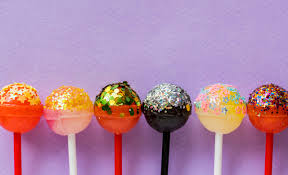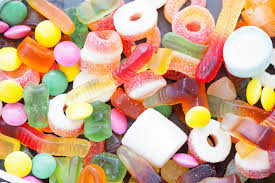by Lisa O’Gorman, CEC
Food manufacturers are very creative when it comes to labeling and hiding what they don’t want you to know. FDA food packaging regulations require ingredients to be listed by weight. The first ingredient on a label is what there is the most of in one serving. So instead of using a lot of one kind of sugar, meaning that it appears early on the ingredient list, manufacturers will often use several different kinds of sugar so that the weight is less and it appears later on the label leading the consumer to believe that there is not that much added sugar in the product. Or as I like to tell people- “Don’t Believe the Hype” which is my way of saying- don’t rely on the attractive, colorful and enticing front of the label that companies spend hundreds of thousands of dollars to get you to buy their product. The truth lies in the VERY SMALL black and white print on the other side- that very few look at before tossing the product in their shopping cart. The perfect example of this was when I was at a friend’s house for dinner and she was excited about the salad dressing that she purchased for our dinner. She told me how she found this “heart healthy, low carb etc.… dressing. I smiled and told her how great that was and then as I tend to do, I turned over the bottle to read the ingredients. The first or second one being high fructose corn syrup. I smiled and mumbled under my breath “guess I’ll be making salad dressing tonight”. I don’t fault her in the least as this is what big companies and manufacturers depend on. The “HYPE”. Too much sugar just isn’t good for anything or anyone’s health and the overconsumption of it is a worldwide problem. It is in just about everything, most table salts list dextrose-often the second ingredient. Often labels will list “added sugars” which helps to differentiate naturally occurring sugars as in tomato sauce, applesauce etc. Almost all products have what is called natural sugars. These are sugars that are inherently already in the food such as fructose in fruits and lactose in dairy. Added sugars are just that, added in one or more forms during the processing or preparation of the product. Their names are listed at the end of this blog.
Added sugars on ingredient lists often include fructose, dextrose, and glucose. Syrups, as high-fructose corn syrup, malt syrup, maple syrup and agave syrup. Nectars, and juices, pear nectar, peach nectar, fruit juice, cane juice and any mention or “sugar” as in palm sugar and evaporated sweetener.
Sugar Alcohols. In many foods that contain alternative natural sweeteners such as Stevia or Monk fruit there will be a category on the label called sugar alcohols. They are a hybrid of sugar molecules and alcohol molecules and do not contain any ethanol, so they are safe for those who avoid alcohol.
Sugar alcohols are partially resistant to digestion so they act more like dietary fiber. They are not digested in the stomach and travel to the large intestine where they are metabolized by gut bacteria.
Reducing the consumption of sugars is a great step to increasing health and wellness. The time spent to read the fine print of labels is an investment in your health and those around you. Without paying attention, it is easy to consume the equivalent amount of sugar in a piece of cake or ice cream from processed foods before dinner!!
Serving size is something else that needs to be paid close attention to. Often times the “serving size” listed on the package is a lot less than what is typically consumed at one seating. If you eat twice the amount listed on the package as one serving, you must double the nutrient values given for the one serving on the label.
61 Names of Added Sugars:
Agave nectar, Barbados sugar, Barley malt, Barley malt syrup, Beet sugar, Brown sugar, Buttered syrup, Cane juice, Cane juice crystals, Cane sugar, Caramel, Carob syrup, Castor sugar, Coconut palm sugar, Corn sweetener, Corn syrup, Corn syrup solids, Date sugar, Dehydrated cane juice, Demerara sugar, Dextrin, Dextrose, Evaporated can juice, Free-flowing brown sugars, Fructose, Fruit juice, Fruit juice concentrate, Glucose, Glucose solids, Golden sugar, Golden syrup, Grape sugar, HFCS (high-fructose corn syrup), Honey, Icing sugar, Invert sugar, Malt syrup, Maltodextrin, Maltol, Maltose, Mannose, Maple syrup, Molasses, Muscovado, Palm sugar, Panocha, Powdered sugar, Rae sugar, Refiner’s syrup, Rice syrup, Saccharose, Sorghum syrup, Sucrose, Sugar (granulated), Sweet sorghum, Syrup, Treacle, Turbinado sugar, Yellow sugar
www.SweetNewsAboutLabels.com, www.sugarscience.org
AuthorityNutrition.com, Joe Leech, Dietitian






Comentarios